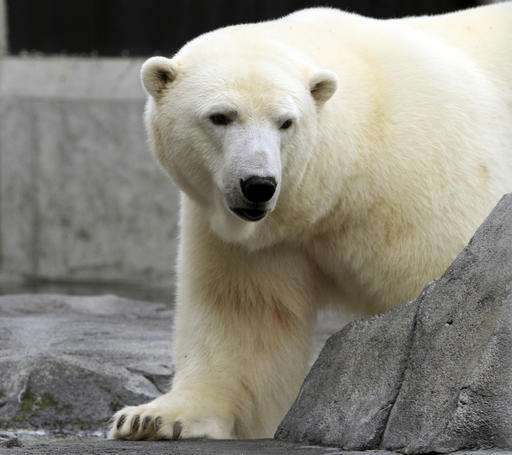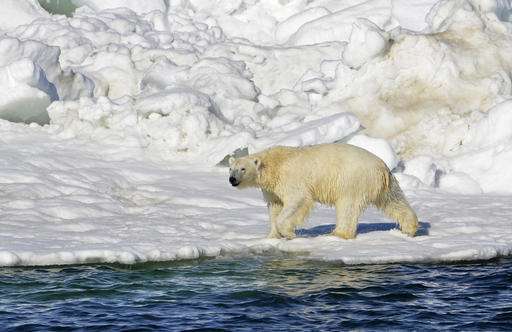Polar bear plan doesn't seek direct action on climate change (Update)

Five years ago, in a meeting room in Alaska, two dozen federal wildlife biologists joined other experts to begin formulating a recovery plan for polar bears because the animals' primary habitat, sea ice, was melting beneath their feet in summer.
The planning came with a caveat: It was beyond their control, members said, to recommend rules addressing climate warming—the main threat to the animals—because the agency that oversees polar bears, the U.S. Fish and Wildlife Service, had no jurisdiction over greenhouse gas emissions linked to the warming.
The agency on Monday released the final polar bear recovery plan, which includes provisions for tertiary threats, such as oil spills and excessive hunting. However, it does not push for any action to cut greenhouse gas emissions and bluntly acknowledges the likely outcome for polar bears.
"Short of action that effectively addresses the primary cause of diminishing sea ice, it is unlikely that polar bears will be recovered," the plan states.
Jenifer Kohout, co-chair of the recovery team, said telling the story of the polar bear's plight and the connection to climate warming is the main thrust of the plan.
"In order to recover polar bears, we believe that we have to address the climate change problem over the long-term," she said.
The recovery plan notes positive signs such as emission goals for individual countries expressed in the Paris climate agreement. However, reduction of emissions in the U.S. is in question under a Trump administration that has vowed to revitalize the coal industry and suggested the country should withdraw from global climate accords.
The world's population of polar bears is currently estimated at 22,000 to 31,000.
Two of the 19 subpopulations—the southern Beaufort Sea off Alaska's north coast and Canada's Western Hudson Bay—are in decline because of sea ice loss.
Shaye Wolf, climate science director for the Center for Biological Diversity, which filed the petition to list polar bears as endangered in 2005, said it was commendable that the plan acknowledges polar bears' dismal future.

However, the crucial step of cutting large-scale greenhouse gas pollution should have been included in criteria for recovery, she said.
The Fish and Wildlife Service may not regulate emissions, Wolf said, but it consults with other agency that do, such as the Environmental Protection Agency.
"A recovery plan should lay out the steps that the Fish and Wildlife Service and other agencies should take to allow a species to recover," she said. "That includes, in this case, rapid cuts in greenhouse gas emissions and it should be the cornerstone of this recovery plan."
Polar bears use sea ice for breeding and hunting. They can go for months without eating but in late spring gorge on ice seals, especially ringed seals, when those animals give birth in snow caves dug on sea ice. Ringed seals themselves were declared threatened in December 2012 because of sea ice loss brought on by climate warming.
Polar bears were listed as endangered in 2008 by Dirk Kempthorne, the Interior secretary under then-President George W. Bush, amid the alarming loss of summer sea ice in recent decades and climate models indicating the trend would continue.
In the announcement, however, Kempthorne said the Endangered Species Act would not be used to regulate the nation's greenhouse gas emissions.
While drafting the polar bear recovery plan, Fish and Wildlife Service officials said it differed from other recovery plans that could link specific harmful actions to a threatened species, such as manure from a dairy farm entering a stream and killing endangered trout.
Kohout said there continues to be no clear connection to establish that a pollution source in Pennsylvania or elsewhere is the direct cause of ice loss in the Arctic.
Wolf called that argument outdated. Federal scientists, she said, estimate each metric ton of carbon dioxide emission results in a loss of 3 cubic meters of September Arctic sea ice. The average American emits 16.4 metric tons of CO2 per year.
"We can make our direct link to CO2 emissions," she said.
© 2017 The Associated Press. All rights reserved.

















